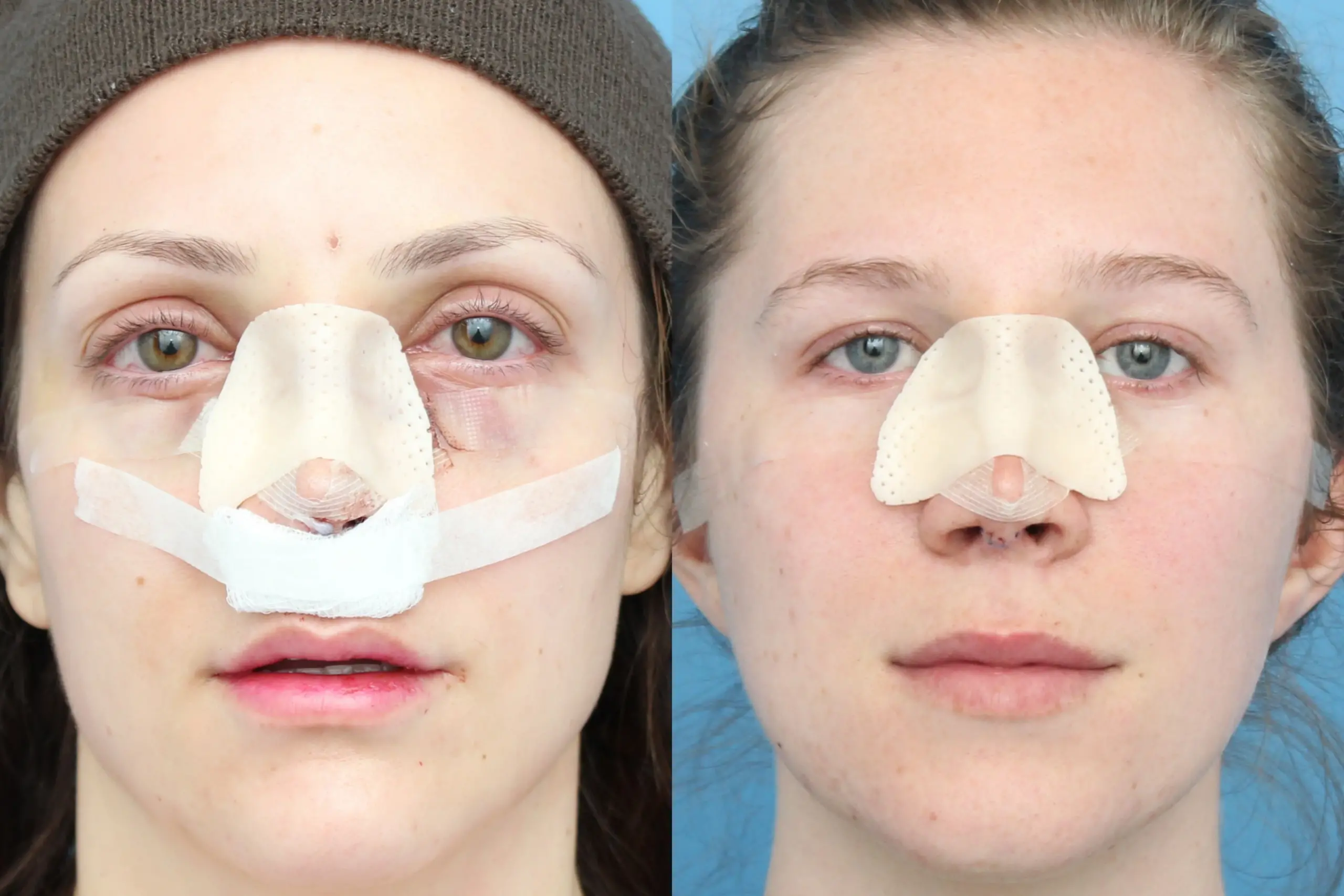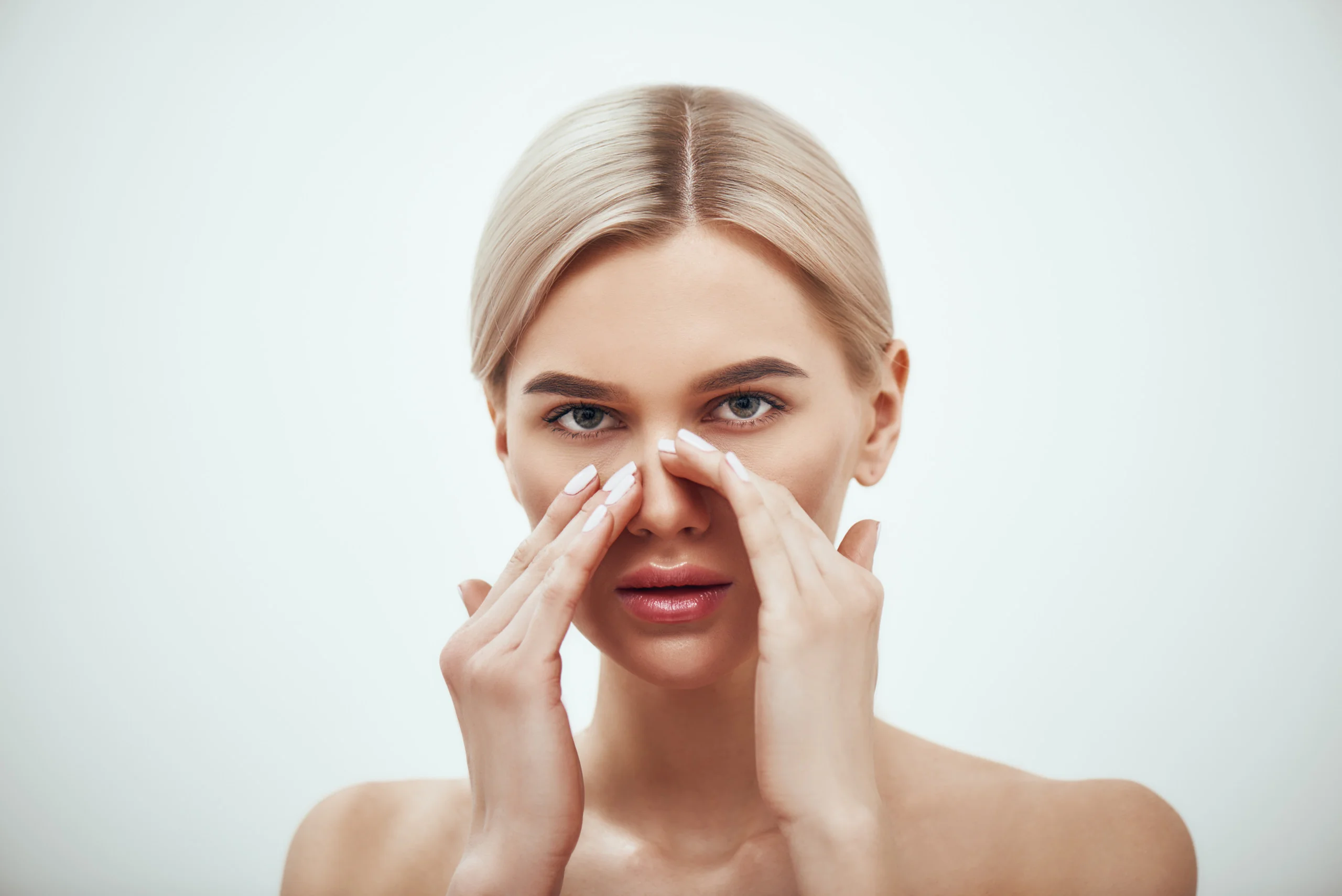
Rhinoplasty How To Reduce Swelling 2023
Rhinoplasty How To Reduce Swelling, learn ways to reduce post-rhinoplasty swelling. Tips and strategies to reduce and prevent swelling after nasal surgery. If you’ve recently undergone rhinoplasty, you may be wondering how to reduce swelling and speed up the healing process. Swelling is a common side effect of rhinoplasty, but there are several steps you can take to minimize it. In this article, we’ll explore how long it takes for swelling from rhinoplasty to go down and provide you with tips on reducing and preventing swelling after nose surgery.
How Long Does It Take for Swelling from Rhinoplasty to Go Down?
Swelling is a natural part of the healing process after rhinoplasty. It typically peaks in the first few days after surgery and gradually subsides over time. However, the exact duration of swelling can vary from person to person.
Most patients will notice a significant improvement in swelling within the first two weeks following rhinoplasty. By the end of the first month, a substantial portion of the swelling should have resolved. However, it can take several months, and in some cases up to a year, for all residual swelling to completely disappear.

How to Reduce Swelling After Nose Surgery
Reducing swelling after rhinoplasty is a top priority for patients. Here are some effective strategies to help minimize post-operative swelling:
- Elevate Your Head: Keeping your head elevated, even while sleeping, can help reduce swelling. Use an extra pillow to elevate your upper body.
- Apply Cold Compresses: Applying cold compresses to the swollen areas of your nose can help constrict blood vessels and reduce inflammation. Be sure to follow your surgeon’s recommendations for cold compress use.
- Stay Hydrated: Drinking plenty of water can help flush excess fluids from your system, reducing swelling.
- Follow Your Medication Schedule: Take any prescribed medications, such as anti-inflammatories, as directed by your surgeon.
- Avoid Salt: Reducing your salt intake can help prevent water retention and minimize swelling.
- Limit Physical Activity: Avoid strenuous exercise and activities that could increase blood flow to your face and nose.
- Protect Your Nose: Be cautious when cleaning or blowing your nose to avoid causing trauma to the surgical site.
- Follow Your Surgeon’s Instructions: Always follow your surgeon’s post-operative care instructions carefully. They will provide guidance tailored to your specific case.
Remember that swelling is a normal part of the healing process, and it will gradually improve with time. If you have concerns about excessive swelling or other post-operative issues, don’t hesitate to contact your surgeon for guidance.
Top 10+ Best Rhinoplasty (Nose Job) Clinics: Rhinoplasty Clinics
How to Reduce Swelling After Rhinoplasty Cast Removal
After the cast from your rhinoplasty is removed, you may experience some residual swelling. This is normal, and there are steps you can take to further reduce swelling during this phase:
- Gentle Massage: Your surgeon may recommend gentle massage of the nasal tip to help with swelling. Follow their instructions closely.
- Continue Cold Compresses: Cold compresses can still be beneficial after cast removal.
- Arnica Supplements: Some patients find that arnica supplements or topical arnica gel can help reduce bruising and swelling.
- Patience: It’s important to be patient during the healing process. Swelling will continue to improve over the coming weeks and months.
Remember that every individual’s healing process is unique, so your experience may differ from others. Follow your surgeon’s guidance, attend follow-up appointments, and give your body the time it needs to heal properly.

How to Prevent Swelling After Rhinoplasty
While some swelling is inevitable after rhinoplasty, there are steps you can take before surgery to help minimize post-operative swelling:
- Choose an Experienced Surgeon: Select a board-certified plastic surgeon with extensive experience in rhinoplasty procedures.
- Communicate Your Goals: Clearly communicate your aesthetic goals to your surgeon during the consultation process.
- Follow Pre-Operative Instructions: Adhere to all pre-operative guidelines provided by your surgeon. This may include dietary restrictions and discontinuing certain medications.
- Stay Healthy: Prioritize your overall health by eating well, staying hydrated, and getting plenty of rest before surgery.
By following these steps and working closely with your surgeon, you can help ensure a smoother and less-swollen recovery period after rhinoplasty.
Önerilen İçerik: Rhinoplasty in Turkey
How to Reduce Eye Swelling After Rhinoplasty
Eye swelling can sometimes accompany nasal swelling after rhinoplasty, especially if the surgery involved work on the nasal bridge. To address eye swelling:
- Cold Compresses: Apply cold compresses gently to the eyelids to reduce swelling.
- Avoid Eye Rubbing: Refrain from rubbing your eyes to prevent further irritation.
- Sleep with Head Elevated: Elevating your head while sleeping can help reduce eye swelling.
- Eye Drops: Consult with your surgeon about using lubricating eye drops to keep your eyes comfortable.
Remember that eye swelling should also improve as your overall swelling subsides.
How to Reduce Swelling Months After Rhinoplasty
It’s not uncommon for some residual swelling to persist for several months after rhinoplasty. To minimize swelling during this extended healing phase:
- Be Patient: Continued patience is crucial as swelling gradually resolves.
- Maintain Healthy Habits: Stick to a healthy lifestyle with a balanced diet, hydration, and regular exercise to support healing.
- Follow-up Appointments: Attend all scheduled follow-up appointments with your surgeon to monitor your progress.
- Discuss Concerns: If you have concerns about persistent swelling, consult with your surgeon. They can provide guidance and reassurance.
How to Reduce Swelling and Bruising After Rhinoplasty
Bruising often accompanies swelling after rhinoplasty. To address both issues:
- Arnica Supplements: As mentioned earlier, arnica supplements or gel can help reduce both swelling and bruising.
- Vitamin C: Incorporate vitamin C-rich foods into your diet to support healing.
- Sun Protection: Protect your nose from sun exposure, as UV rays can exacerbate swelling and bruising.
- Topical Treatments: Consult with your surgeon about topical treatments that may assist in reducing swelling and bruising.
By following these strategies, you can actively participate in your healing process and promote a smoother recovery after rhinoplasty.
How to Reduce Cheek Swelling After Rhinoplasty
Cheek swelling can occur, especially if the surgery involved work on the nasal base or septum. To address cheek swelling:
- Sleep Position: Sleep with your head elevated and ensure your cheeks are not pressing against a pillow.
- Topical Treatments: Your surgeon may recommend topical treatments to reduce cheek swelling.
- Gentle Massage: If advised by your surgeon, gentle massage of the cheeks can help with swelling.
- Maintain a Healthy Diet: Proper nutrition can support healing and minimize swelling.
Remember, swelling is a temporary phase of the rhinoplasty recovery process. With time and proper care, you’ll enjoy the full benefits of your rhinoplasty results.
In conclusion, reducing swelling after rhinoplasty requires patience, adherence to your surgeon’s guidance, and a commitment to a healthy lifestyle. By following these tips, you can contribute to a smoother and more comfortable recovery experience. If you have any concerns about your healing process, always consult with your surgeon for personalized advice.
How Long Does Rhinoplasty Swelling Last?
Does Massaging Your Nose After Rhinoplasty Help With Swelling?
What Foods Reduce Swelling After Rhinoplasty?
What Are the Worst Days of Swelling After Rhinoplasty?
Similar Post:


 Ücretsiz Çevrimiçi Danışmanlık
Ücretsiz Çevrimiçi Danışmanlık

 Ortalama Yanıtlama Süresi – 5 Dakika
Ortalama Yanıtlama Süresi – 5 Dakika
